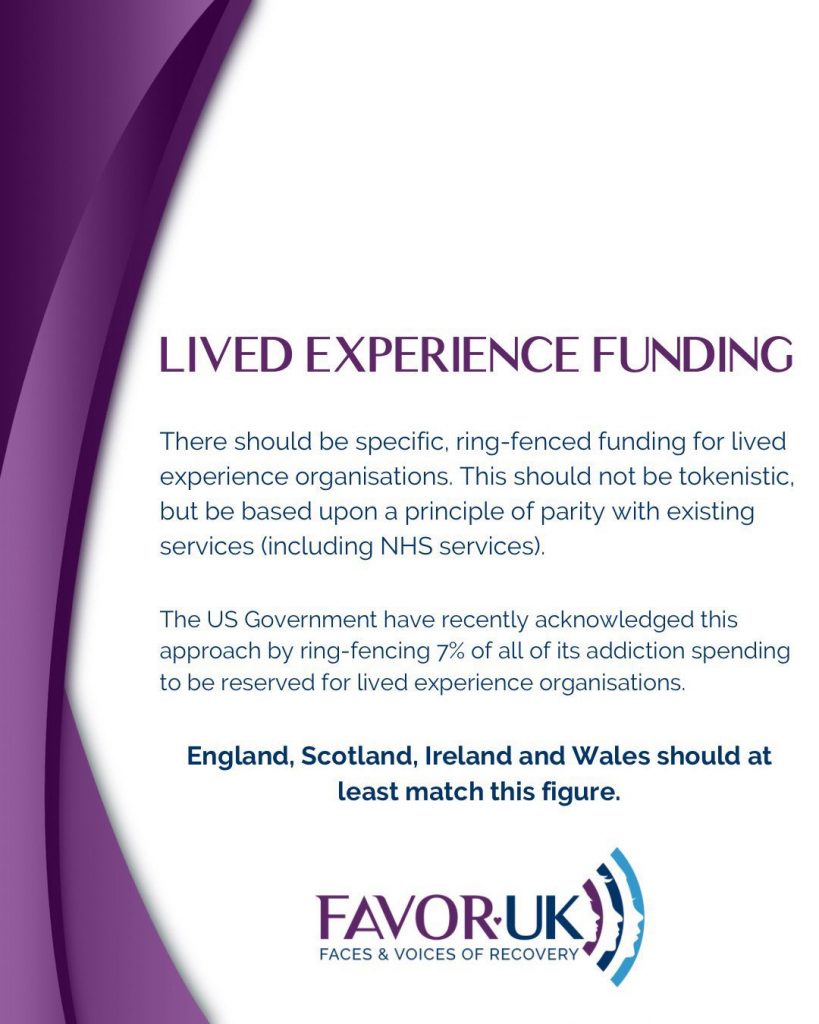The drug death crisis across the UK remains one of the most pressing public health challenges of our time. The recent statistics for 2023 from Scotland, and England and Wales, reveal stark differences between the two nations. As someone deeply committed to advocating for recovery-oriented drug policies, the latest figures are both sobering and a rallying call for urgent action.
Scotland’s Crisis: A National Emergency
Scotland continues to experience a drug death rate that is devastatingly high. In 2023, we saw 1,172 drug misuse deaths, a 12% increase compared to the previous year. This brings Scotland’s rate to 22.4 deaths per 100,000 people, nearly triple that of England and Wales combined.
The problem is deeply rooted in Scotland’s socioeconomic fabric. People in the most deprived areas are more than 15 times as likely to die from drug misuse compared to those in the least deprived areas. This profound inequality highlights the long-standing neglect of Scotland’s most vulnerable communities. The gap between the richest and poorest, in terms of drug deaths, is much larger than in other causes of death, making this not just a health crisis but a genuine social justice one.
England and Wales: Rising Numbers and the Cocaine Epidemic
England and Wales are also facing an escalating problem, with figures released today – 5,448 drug-related deaths in 2023. This marks an 11% increase from the previous year, translating to 93 deaths per million people. Although still almost 3 times lower than Scotland’s rate, the rise is concerning, particularly with the noticeable increase in deaths involving cocaine.
Cocaine-related deaths in England and Wales rose by a staggering 30.5% in just one year, with 1,118 deaths in 2023. This represents the 12th consecutive annual rise, making it one of the most alarming trends in recent years. While the North East of England remains the hardest-hit region, with a drug death rate of 174.3 deaths per million, London had the lowest rate at 58.1 per million.
The rise in cocaine-related deaths may point to a critical flaw in the current approach to addiction. Unlike heroin or opioids, where the state has relied heavily on synthetic substitutes like methadone to keep people off dangerous street drugs, there’s no equivalent for cocaine. With no state-sponsored substitute to offer, the growing cocaine epidemic exposes the limits of harm reduction strategies that prioritise maintaining dependency through prescriptions over genuine recovery.
This alarming trend could force the addiction sector to reevaluate its reliance on synthetic substitution and, perhaps, return to real solutions—helping people achieve freedom from dependency rather than simply managing addiction. The methadone model has long been seen as a cost-effective way to manage heroin addiction, but it leaves individuals still trapped in cycles of dependency. As the cocaine crisis grows, policymakers may be forced to shift their focus toward full recovery, investing in rehabilitation and abstinence programs that provide a long-term path to breaking free from drugs entirely.
Demographic Shifts: Older and More Vulnerable
In both Scotland and England/Wales, we are seeing a shift in the demographics of drug-related deaths. In Scotland, the average age of death for drug misuse has risen from 32 in 2000 to 45 in 2023. Similarly, in England and Wales, the highest rate of drug misuse deaths is among those aged 40 to 49, often referred to as “Generation X.” This aging cohort of users reflects the long-term, entrenched nature of addiction in these populations.
This trend toward older users dying from drug misuse points to the chronic lack of long-term support for people seeking recovery, especially those who have been dealing with addiction for decades. Without sustained, recovery-focused interventions, this generation will continue to be at extreme risk of premature death.
The Substance Divide: Scotland vs. England and Wales
Both nations share a heavy burden of deaths related to opiates, but Scotland’s drug death landscape is notably more complex. In Scotland, 80% of drug deaths involved opiates or opioids like heroin and methadone. What sets Scotland apart, however, is the prevalence of benzodiazepines, implicated in 58% of drug deaths. The majority of these are street benzodiazepines, which are often more dangerous and potent than their prescribed counterparts.
In contrast, while England and Wales also report a significant involvement of opiates in nearly half of drug-related deaths, the rapid rise of cocaine deaths is more prominent. Scotland, too, has seen increases in cocaine-related deaths, but the rise in benzodiazepine-related fatalities is what distinguishes its drug death crisis.
Could Cocaine Spur a Shift Toward Real Recovery?
With the growing cocaine crisis in England and Wales, the state may be forced to face an uncomfortable truth: there is no quick-fix substitute to offer. Methadone has long been the “go-to” for heroin, but for cocaine, no such synthetic replacement exists. The sharp rise in cocaine-related deaths is a clear signal that our approach—managing addiction through substitution—cannot continue to be the backbone of UK drug policy.
The addiction sector now stands at a crossroads. Do we continue relying on cheap, short-term solutions like substitution treatments that keep people dependent, or do we make the necessary investment in programs that offer genuine freedom from addiction? Real recovery—rehabilitation, abstinence, and long-term support—is not only more costly upfront, but it is also the only sustainable solution if we are to prevent further loss of life. The cocaine epidemic may be the catalyst that forces the UK to return to this long-ignored path to recovery.
A Call for Recovery-Oriented Solutions
These figures are more than just statistics—they represent lost lives, shattered families, and communities in despair. As advocates for recovery, we must push beyond the boundaries of harm reduction alone. The tragic rise in deaths, particularly the sharp increase in cocaine-related fatalities, reflects the urgency of reforming our drug policies.
Recovery must be at the heart of our approach. Scotland’s ongoing crisis reveals that harm reduction without a strong recovery framework leaves too many people behind. We need systems that help individuals not just survive their addiction but overcome it. This includes greater access to rehabilitation services, support for those in recovery, and policies that tackle the root causes of addiction, including poverty, mental health, and social inequality.
As we reflect on the differences and similarities between Scotland and England/Wales, it’s clear that the UK as a whole is facing an unparalleled drug crisis. But by working together, embracing recovery-focused solutions, and addressing the social determinants of addiction, we can turn the tide. Every life saved is a step toward a healthier, more just society.
The time for change is now. Let’s act before more lives are lost to this preventable tragedy.

The reports on drug-related deaths in Scotland and England/Wales from 2023 highlight several differences and commonalities between the two regions in terms of the scale of the issue, demographic characteristics, substances involved, and socioeconomic factors contributing to drug-related fatalities. Here is a comparison of the two:
1. Overall Death Rates
Scotland: In 2023, there were 1,172 drug misuse deaths in Scotland, marking an increase of 12% from 2022. The rate of drug misuse deaths was 22.4 per 100,000 people(drug-related-deaths-Sco…).
England and Wales: In England and Wales, there were 5,448 drug-related deaths in 2023, an 11% increase from the previous year. The rate of drug-related deaths was 93 per million people, or approximately 9.3 per 100,000(Deaths related to drug …).
Key Difference: Scotland continues to have a far higher rate of drug deaths compared to England and Wales, where Scotland’s rate (22.4 per 100,000) was nearly triple the combined rate of England and Wales.
2. Demographic Trends
Scotland: The majority of drug-related deaths were among people aged 35 to 54, with 65% of deaths occurring in this age group. The average age of death has increased over time, from 32 in 2000 to 45 in 2023(drug-related-deaths-Sco…).
England and Wales: The highest rate of drug misuse deaths occurred in those aged 40 to 49 (147.3 deaths per million), part of the “Generation X” cohort. The average age of death for drug misuse in 2023 was 44.5 for men and 47.5 for women(Deaths related to drug …).
Key Difference: While the predominant age group affected is similar, Scotland reports an increasing age of death, reflecting a shifting demographic toward older users.
3. Substances Involved
Scotland: Opiates or opioids were implicated in 80% of all drug misuse deaths in 2023, with heroin/morphine and methadone being the most frequently mentioned substances. Benzodiazepines were implicated in 58% of deaths, with street benzodiazepines accounting for the majority(drug-related-deaths-Sco…).
England and Wales: Just under half of all drug-poisoning deaths involved an opiate (46.8%), and cocaine was involved in 30.5% more deaths than the previous year. Methadone was also commonly mentioned(Deaths related to drug …).
Key Difference: Opiates are a major factor in drug deaths in both regions, but benzodiazepines play a much larger role in Scotland than in England and Wales, where cocaine deaths have risen more significantly.
4. Socioeconomic and Regional Factors
Scotland: People living in the most deprived areas were more than 15 times more likely to die from drug misuse compared to those in the least deprived areas(drug-related-deaths-Sco…).
England and Wales: Drug-related deaths are highest in the North East of England, which had 174.3 deaths per million people. In contrast, London had the lowest rate at 58.1 deaths per million(Deaths related to drug …).
Key Difference: Both regions show a strong link between deprivation and drug-related deaths, but Scotland’s disparity between the most and least deprived areas is particularly stark.
5. Gender Disparities
Scotland: Males accounted for the majority of drug deaths, with men being twice as likely to die from drug misuse as women. In 2023, male deaths increased by 16% compared to a 2% increase in female deaths(drug-related-deaths-Sco…).
England and Wales: Similarly, males accounted for more than two-thirds of drug-related deaths, with a rate of 127.6 deaths per million for men compared to 59.8 for women(Deaths related to drug …).
Key Similarity: Both regions report significantly higher death rates among males compared to females.
In conclusion, while both Scotland and England/Wales are facing significant challenges with drug-related deaths, Scotland’s rate is significantly higher, and its drug death crisis is exacerbated by extreme levels of deprivation and the prominence of street benzodiazepines. England and Wales also show worrying trends, particularly with the rise in cocaine-related deaths and persistent regional disparities.

